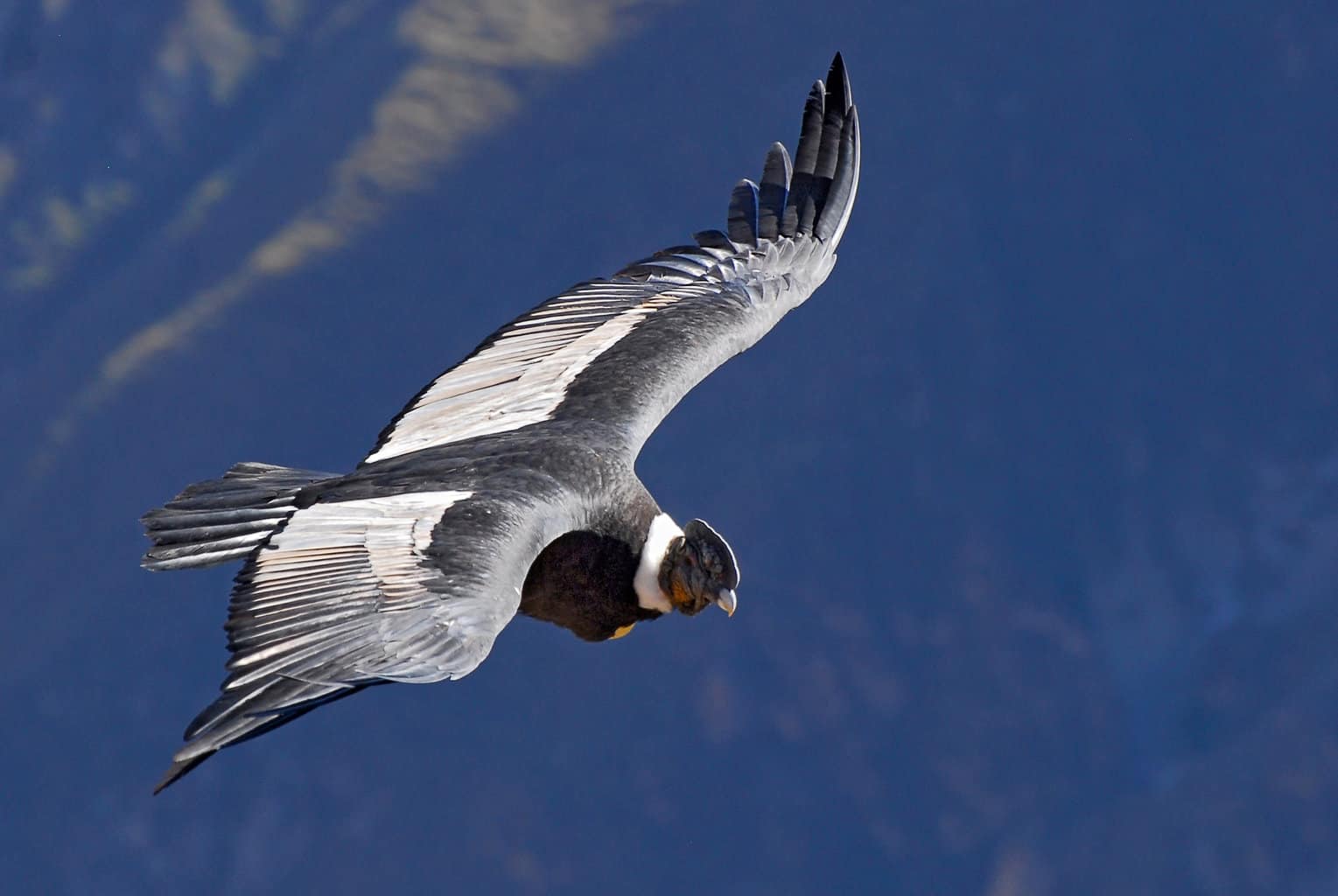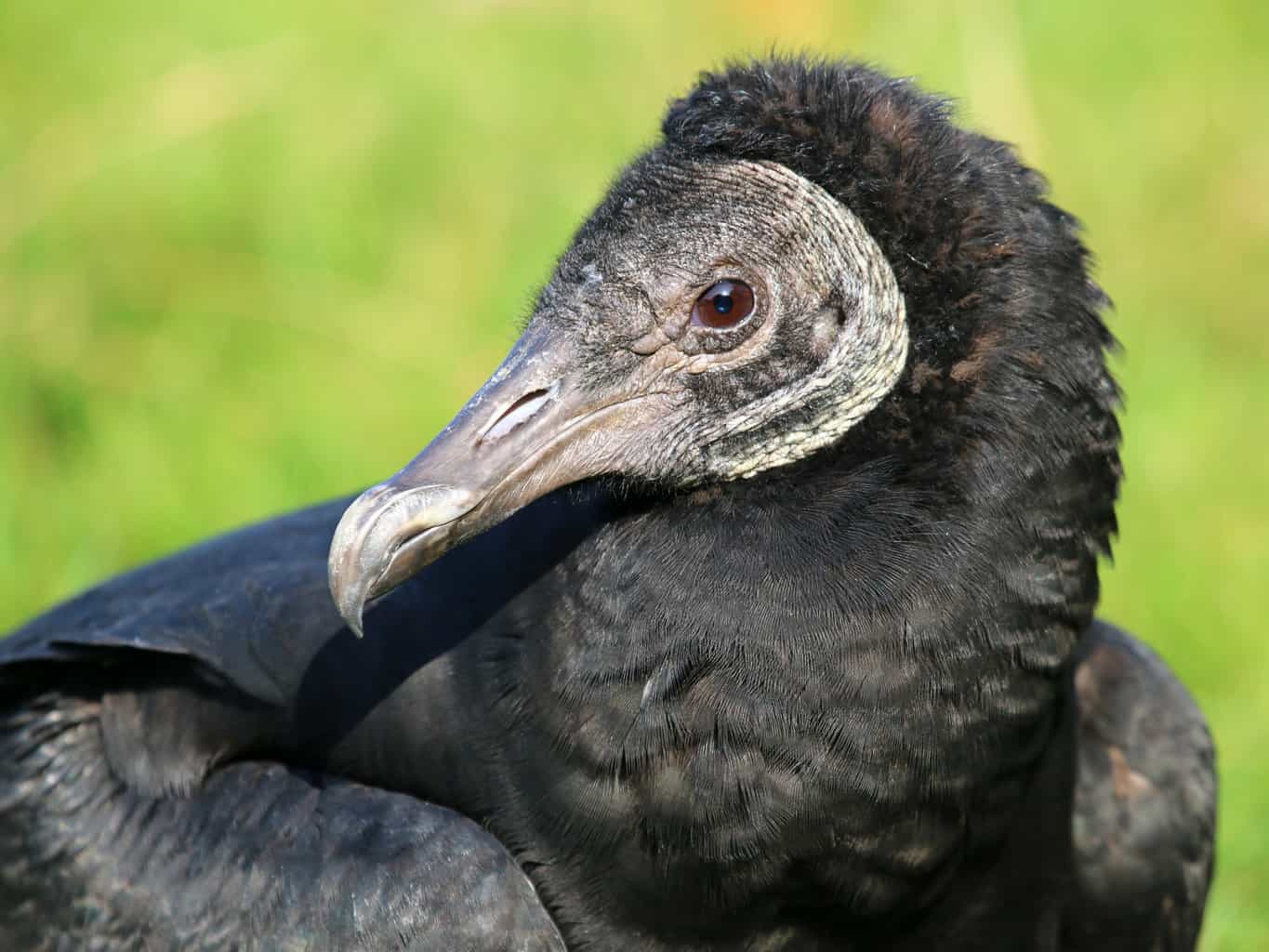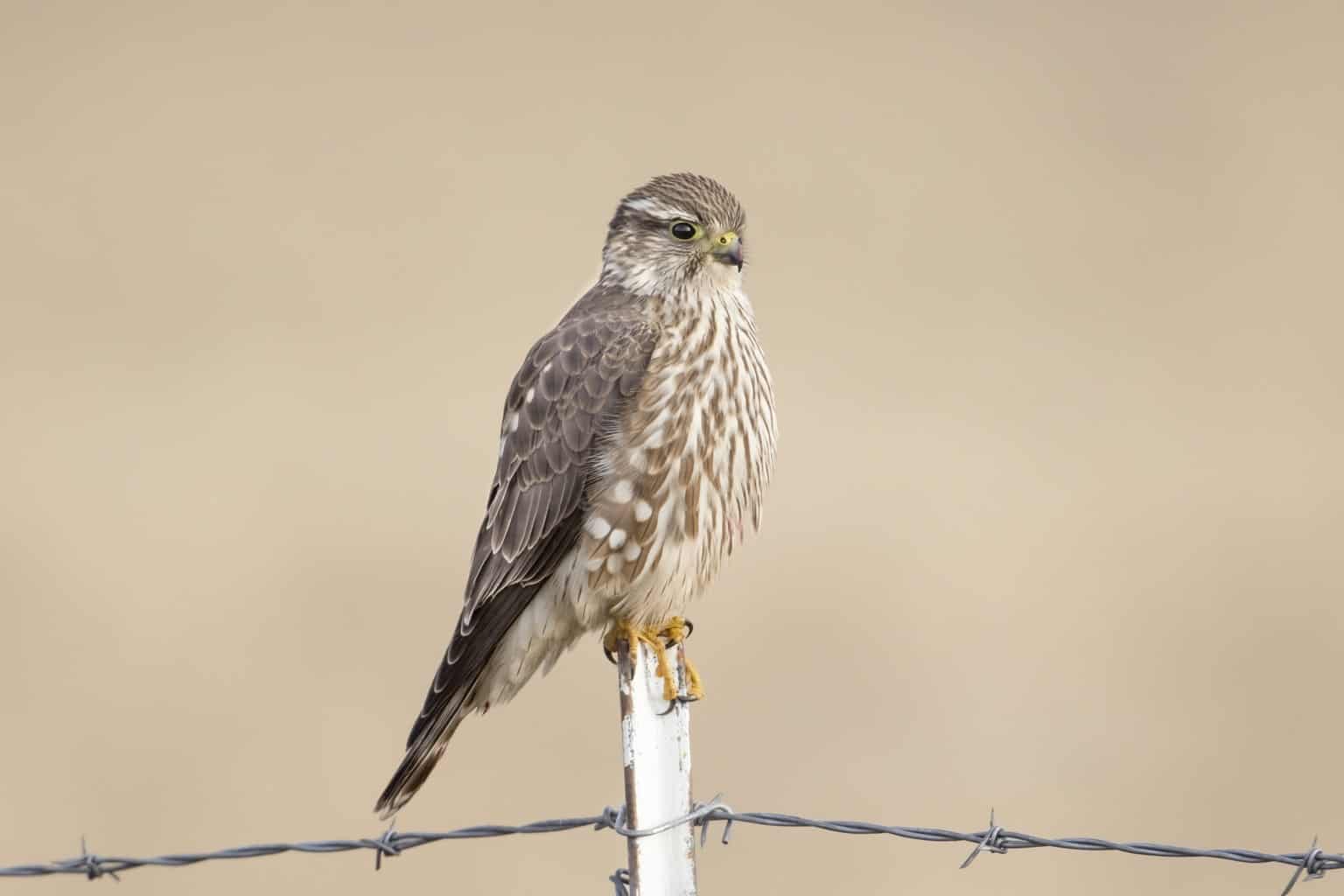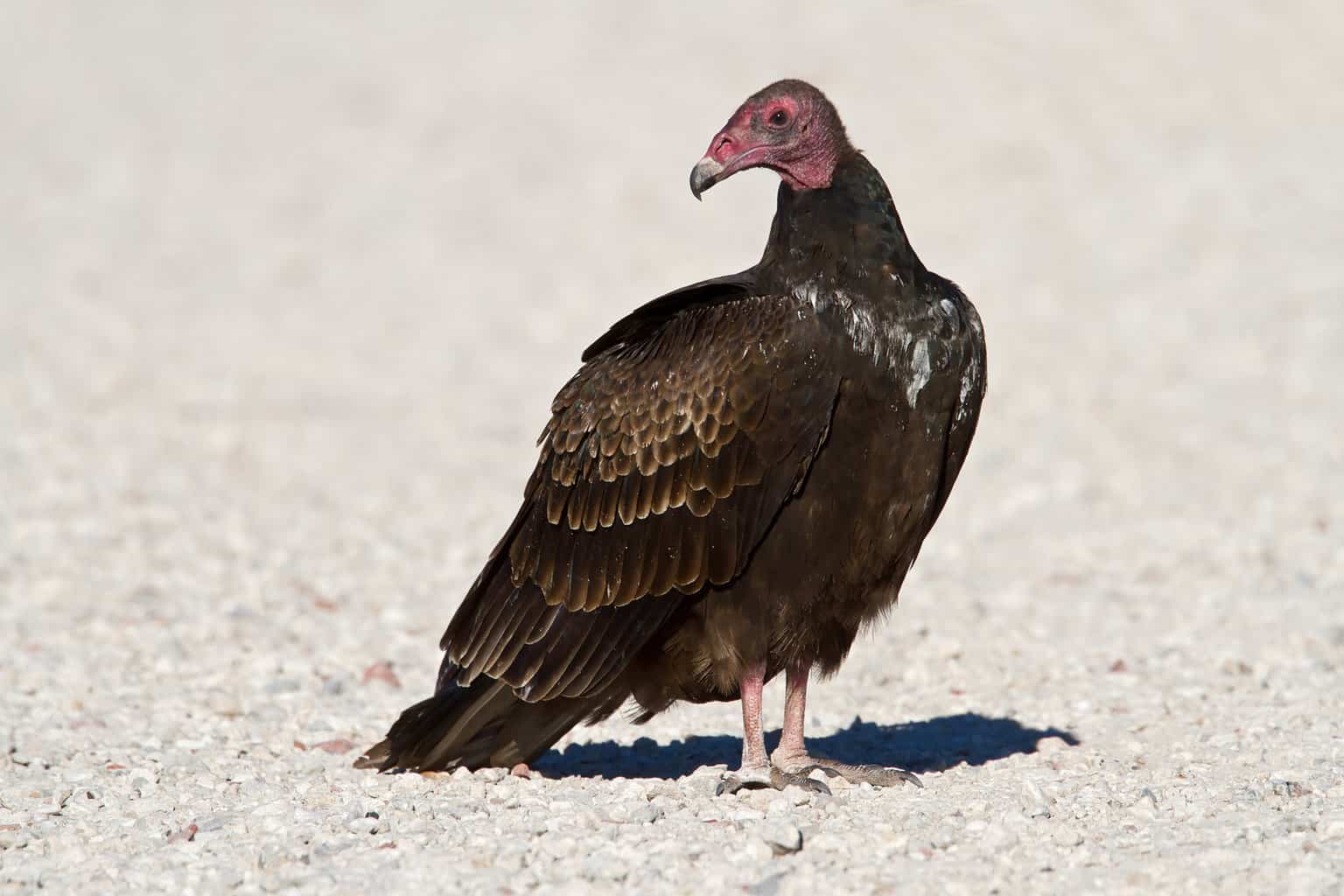The first time I saw a bald eagle soaring above the woods at my house, I couldn’t believe my eyes. Was that really a bald eagle?
Birds of prey often look similar, especially from a distance. Many people thought they spotted a bald eagle but actually saw an entirely different raptor.
Being able to differentiate between raptors is a useful birding skill! It’s far more common to see these birds from a distance than up close, so knowing as much as possible about the birds of prey in your area is a great idea!
Key Takeaways
- Focus on distinct features: Identify bald eagles by their chocolate brown bodies and bright white heads, while juvenile bald eagles have a brown-mottled appearance for their first few years.
- Size and shape matter: Bald eagles are significantly larger than similar birds like ospreys and also have different beak and talon colors.
- There are many raptor lookalikes: While some birds have similar profiles, such as the Red-tailed Hawk and the Golden Eagle, there are unique characteristics like the golden eagle’s lack of fish in their diet.
What Do Bald Eagles Look Like?
Bald eagles are stunning birds. Adults look the same, regardless of sex, although females are larger and have a wider wingspan. These distinctive features help to identify individual birds.
They both have dark chocolate brown bodies, including their wings and an all-white head. Their beak and sharp talons are bright yellows. The head of adults has head coloration and darker heads which are embodied in unique body structures.
Juveniles are all brown, with white mottling all over their bodies. They don’t develop their white head feathers until they mature at about 5. The transition from brown-to-white head feathers happens gradually between years 3 and 5.
Check out this YouTube short from Alaska Raptor Center to get a sense of how big these birds can get.
Is the Bald Eagle the Only White-Headed Bird?
Many birds have white heads, but what about large birds of prey? Are there others with that easily recognizable white head that can be seen on a bald eagle?
The bald eagle is the only bird of its size and shape with a distinct white head in contrast to the rest of its body. It has a black body with narrower wings as well as a heavy body with a white tail.
There are plenty of medium-to-large birds with white heads, including egrets, cockatoos, and owls, but none boast that stunning contrast.
How Do You Tell the Difference Between an Osprey and a Bald Eagle?
Bald eagles are much larger than ospreys. They weigh up to 14 pounds, compared to ospreys, which max out at around 4 pounds. Bald eagles also have a wingspan about 10 inches longer than an osprey.
Bald eagles have signature white heads and brown plumage. A bald eagle’s beak and talons are yellow, compared to an osprey’s black beak and talons.
Bald eagles and ospreys both have similar nesting habits and diets.
Is There a Hawk That Looks Like a Bald Eagle?
Red-tailed hawks may not have the same coloration as bald eagles but they have a similar shape. From a distance, red-tailed hawks may look like bald eagles.
A mix-up is likely if you look at the bird from underneath, as it’s difficult to see its color and patterns.
Another thing that can be confusing is that juvenile bald eagles don’t have the telltale white head, so they are more likely to be confused with red-tailed hawks.
Birds That Look Like Bald Eagles
Birds can look like bald eagles in one or more of the following ways:
- Size: (up to 14 pounds and up to an 80″ wingspan)
- Color: (dark brown or black, potentially mottled)
- Shape: (distinctive raptor shape)
- Other Details: (hooked beak, sharp talons, fanned tail in flight)
Even though none of these birds are exactly like a bald eagle, there’s something about each one that is similar to the USA’s national bird. Let’s take a look!
Andean Condor

Very few birds the size of South America’s Andean Condor can fly! These big vultures weigh between 17 and 33 pounds, but they can still take to the air! Their broad wings are up to 10.5 feet across.
They live throughout the Andes mountains, which run along the Pacific coast of South America.
Fun fact about Andean condors: Raptors are not usually sexually dimorphic, which means males and females have very similar appearances. Andean condors are different, though. Males have a large comb on their heads, and females don’t.
Black Kite

Widespread in Africa, Asia, and Australia, the black kite has no overlapping territory with bald eagles. Their similarity is in silhouette while flying.
Black kites are foragers and may be found in trash dumps and urban areas.
Fun fact about black kites: Black kites are known for feeding on animals trying to escape forest fires! Some even believe that black kites actively try to start fires to draw out easy prey.
Black Vulture

In flight, the black vulture’s silhouette looks similar to a bald eagle, with some territorial overlap. Black vultures live in the southeastern US, Mexico, and South America.
Like turkey vultures, they are carrion birds who scavenge for dead animals.
Fun fact about black vultures: Because they don’t have a good sense of smell, they are not well equipped to track down dead animals.
Instead, they fly at high altitudes and watch for lower-altitude turkey vultures. Then they follow the turkey vultures to their feast!
I have a pretty easy time spotting these vultures due to their distinctive way of looping around and around high up in the air.
Cooper’s Hawk

A Cooper’s hawk is more typically confused with a red-tailed hawk than a bald eagle, but there are some situations when a mix-up could occur.
Specifically, their barred brown-and-cream appearance is quite similar to the mottling of a juvenile bald eagle, especially from a distance.
The biggest difference is their silhouette in flight. Cooper’s hawks do not have fanned tails, and their wing tips are much smaller.
Fun fact about Cooper’s hawks: Male Cooper’s hawks are much smaller than females, and they do a lot to support their female mates.
Males build the nests and provide all the food females need while sitting on the nest for nearly 90 days, hatching and carrying for young.
Golden Eagle

Though the golden eagle does not have the same coloring as a bald eagle, its shape and impressive size are reminiscent of the bald eagle. Both species of raptors also live in North America, although golden eagles are more migratory than bald eagles.
Golden eagles get their name from their gleaming gold plumage. They also have broad wings, strong talons, and curved black-tipped beaks.
Fun fact about golden eagles: Golden eagles don’t eat fish. Why does this matter? Because DDT affected animals more significantly as it moved up the food chain, fish was one of the most significant ways that many birds of prey were introduced to DDT poisoning.
Because golden eagles eat animals that weren’t as likely to have experienced DDT poisoning, golden eagles never suffered from the population decline that wiped out many other raptors!
Northern Goshawk

A Northern goshawk is bigger than Cooper’s hawk but smaller than a bald eagle. It has a different in-flight silhouette than an eagle, as it has a much smaller, squared-off tail that is less likely to fly out in flight.
Its coloring can be mistaken for a juvenile bald eagle, though, especially because of its hooked beak.
However, northern goshawks are mostly white underneath, compared to a juvenile bald eagle’s brown chest and belly.
They live in Canada all year and will venture into an American habitat for the non-breeding season. They are not seen in the American southeast.
Fun fact about northern goshawks: A pair of northern goshawks will build multiple nests every year–up to 8 of them! This allows them flexibility and adaptability.
If a brood of eggs fails, they can move on to a different nest for the rest of the year. They like options and may return to one nest multiple years in a row or choose a new one each year!
Northern Harrier

The northern harrier’s wings and back are similar in color and shape to that of a bald eagle. Its outstretched wingtips are bald eagle-like, too. However, northern harriers have owl-shaped faces, gliding with their broad wings in a subtle V shape.
Northern harriers live almost exclusively in North America. Their breeding ground extends north into the classic snowy Canadian habitat and they are year-round residents of much of the Midwest and northwest.
During non-breeding months, they spend time in the southwest and southeast. They prefer a prairie or grassland habitat.
Prairie Falcon

The prairie falcon lives in the western half of the United States, typically among desert shrubs and grasslands.
They are excellent at hiding from view, thanks to the beige and brown plumage that match the natural features of the areas where they build their nests.
Prairie falcons have yellow talons, like bald eagles, and their beak is hooked and sharp. That said, their beak is black instead of yellow.
Fun fact about prairie falcons: These birds are playful! Very few birds have been observed participating in play-like behaviors, but prairie falcons are among the ones that have!
They will pick up a piece of dried cow manure, carry it high, drop it, and then swoop down through the air to catch it.
Red-Tailed Hawk

The red-tailed hawk is likely the most populous raptor in North America. They are frequently spotted as they perch on fencerows, fenceposts, powerline poles, and even road signs.
If you keep a lookout while driving along a rural highway, you have a good chance of seeing a red-tailed hawk as it searches for prey!
Red-tailed hawks have dark brown backs and light bellies and chests. Their tail is orangeish-yellow and fans out like a bald eagle’s tail. Some versions are all dark brown or all rufous-colored.
Among the biggest hawks, they only weigh about 3 pounds at their largest. There are many rumors of hawks attacking and carrying off small dogs and cats, but these are mostly unfounded, as most cats and dogs are much bigger than even the largest hawk.
Turkey Vulture

Earlier in this list, we discussed how black vultures couldn’t smell well, so they followed turkey vultures to find prey. Turkey vultures have an incredible sense of smell!
These large dark brown raptors fly in circles with a small group of other turkey vultures. They roost in even larger groups, often among the branches of dead, bare trees. Their flight has been described as “wobbly” or “teetering.”
They have a bald head and a large hooked beak, which they use for ripping apart the flesh of carrion. Turkey vultures live in South America, Mexico, and most of the United States.
Fun fact about turkey vultures: Their stomachs are filled with such strong stomach acid that they can digest just about anything! They are incredibly helpful at keeping the roadways and countryside clean of decaying carcasses.
Western Osprey

The western osprey is also known as the American osprey, the seahawk, the river hawk, and the fish hawk.
It is a powerful bird that eats mostly fish and can be found on every continent except Antarctica. Its head is white and brown, and the white contrasts with its dark brown body, which is why it is sometimes mistaken for a juvenile bald eagle.
Fun fact about ospreys: They fly over the water and then position their bodies so that they can grab fish with their powerful, sharp talons.
After capturing a fish, the osprey will rotate the fish in its talons to be parallel to the bird’s body. This creates a more aerodynamic flying position, even as the osprey carries its prey.

